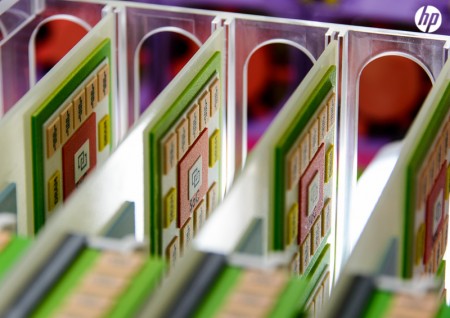April 23, 2015 – Hewlett-Packard, or HP for short is out to reinvent the computer. They call the project The Machine and it is a make or break move for this venerable computer company. With sales of conventional computing technology flat, and a saturated printer market, HP’s traditional bread and butter revenue generators are in decline.
We forget that the world of computing has seen some significant players rise and fall. HP doesn’t want to be remembered like Digital Equipment Corporation, the king of the minicomputer, or Compaq, once upon a time, IBM’s biggest personal computer rival. With current computing technology nothing more than a low-priced commodity in which products from various companies appear interchangeable HP has decided to make a break with the past. Hence The Machine.
I would have called it something else because The Machine reminds me of E. M. Forster‘s novella, The Machine Stops, a chilling science fiction published in 1909 describing a world dominated by a single machine intelligence. But HP’s The Machine bears no resemblance to Forster’s. It is a complete redesign of the way a conventional computer (like the one which I am using to write this blog) works. My computer has two types of storage. There is the temporary or short-term memory where these words when typed get stored, and there is permanently stored memory when I save what I write. The latter is the place where my photos, audio files, and documents get stored. On my desktop it is the hard drive. On my Chromebook it is my flash drive. And my computer operating system, Windows 7 on this desktop, resides there as well.
Stored memory is relatively slow. Temporary or short-term memory is much faster. Conventional computers constantly shuttle information between these two using lots of energy in the process. For word processing you don’t notice the issues of energy and speed. But when you try to do major number crunching this shuffling between two memory states and the power requirements can become onerous. And when you consider the explosion of Internet services in the Cloud today these require millions of computer servers and lots of energy. With 2 billion more of us getting access to the Internet between now and 2020 you can see why HP’s engineers believe a better computing platform is an essential.
Enter The Machine. It doesn’t distinguish between short and stored memory. Instead it uses memristor (memory resistor) rather than transistor-based chips and a brand-new operating system. There is only one type of memory with the memristor the key.
How does a memristor work? It acts like a water pipe that can change dimension based on the direction of water flowing within it. Water going one way causes the pipe to expand increasing the flow. Water going the other way makes it shrink decreasing the flow. Turn off the water and the pipe retains its size and the water inside it. Now instead of water think data bits transmitted using light pulses and you begin to see how information is managed in a memristor-based computing system. No longer the need to shuttle information between short-term and permanent memory. So gone is RAM, flash and disk storage and the energy needed to move data bits back and forth.
To make all this work though you can’t use the old operating systems running transistor-based computers. HP, therefore, is developing new ones, the first to give programmers some insight into the merits of The Machine, while using their current computing platform, while the second The Machine’s actual operating system. The first is an enhancement to the open source operating system Linux, a version HP calls Linux++. The second HP has code named Carbon. scheduled for release in two years. Carbon will be open source like Linux allowing programmers to modify it and make improvements.
In current simulations of a The Machine running Carbon (see prototype hardware below), the technology found 5 similar photographs in a database of 80 million images in 50 milliseconds. Compare that to conventional transistor-based multiple computers running in parallel which would take from several seconds to minutes to accomplish the same result, using more energy and a bigger form factor, and you can immediately see the advantages.
When will we see the first generation of these new computers? HP hopes to launch by 2017. Talk about a disruptive technology that will, once again, change the face of computing.
How far we have come from the “Big Iron” days of mainframe technology a mere fifty years ago. Imagine where we will be fifty years hence.









